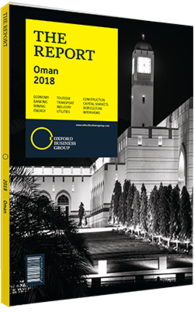Government initiatives and vocational training awareness to cap high number of jobless graduates in Oman
One of Oman’s most pressing challenges is youth unemployment, with new graduates making up a significant portion of the country’s unemployed citizenry. According to the National Centre for Statistics and Information, 47% of Omani graduates are currently employed, and it takes roughly two and four years for male and female Omani graduates, respectively, to find a job. While unemployment rates fell steadily prior to 2014, the sudden drop in oil prices, and the subsequent cut in spending across both the public and private sphere reversed this trend, with unemployment going from 16.9% in 2014 to 17.3% in 2015, before rising again to 17.5% in 2016.
Another contributing factor has been the failure of many companies to properly adhere to the government’s Omanisation quotas, which, since 2010, require companies operating in the sultanate to hire at least 35% Omanis. This prompted the minister of commerce and industry, Ali bin Masoud Al Sunaidi, in February 2017 to warn that companies failing to comply with the target would risk losing out on government benefits, which presently include free commercial lands, soft loans and low corporate taxes and duties.
MISMATCH: While 86% of government employees are Omanis, they make up just 10% of those working in the private sector, according to statistics from the Ministry of Manpower (MoM). As of February 2017 approximately 1.85m expatriates are currently employed in the sultanate’s private sector, compared to 223,000 Omanis. The construction, engineering and financial sectors are the largest employers, and despite the significant proportion of Omanis that study engineering, many do not secure jobs in the sector. According to government figures, 50,083 Omanis work in engineering, compared to nearly 845,000 expatriates, while an estimated 4500 Omani engineers are unemployed.
The reason for this mismatch is two-fold. If private companies, particularly international ones, tend to hire expats, this is in part fuelled by a general preference among locals for public sector employment, which has traditionally been perceived as more prestigious and where salaries tended to be higher. This phenomenon is by no means unique to the sultanate: across the GCC citizens have sought work in public sectors where generously salaried positions have long been accepted as part of the social contract that ensures oil wealth trickles down to its citizens. As a result, private sector companies, particularly international ones, found it easier – and cheaper – to recruit internationally, especially for more specialised roles.
CHANGING MINDS: The solution likely lies in efforts under way to change the perception of occupations that fall outside of traditional spheres. Many state-sponsored campaigns, for example, work in partnership with local institutions to encourage young Omanis to undertake vocational training. “People have definitely become more aware of what is available in terms of vocational opportunities,” Vincent Paul, manager of technical training at the National Training Institute, told OBG. “We have a number of walk-in trainees who come and register themselves for various courses. Then, when there is a labour requirement in the market, we call those who have registered to come in and meet potential employers, who then choose their preferred candidates for training.”
Another major tool in this regard is the work being carried out as part of Tanfeedh, the government’s National Programme for Enhancing Economic Diversification, which was launched in 2016 as a core tenet of Oman’s ninth five-year development plan. Employment and the labour market form one of the five focus areas being addressed by Tanfeedh. The programme is being implemented in eight steps, the second of which involved a series of intensive discussion labs in autumn 2016 designed to identify the challenges facing various focus areas before developing appropriate initiatives. The fifth step is the implementation of these initiatives, which is set to begin in 2018.
You have reached the limit of premium articles you can view for free.
Choose from the options below to purchase print or digital editions of our Reports. You can also purchase a website subscription giving you unlimited access to all of our Reports online for 12 months.
If you have already purchased this Report or have a website subscription, please login to continue.

